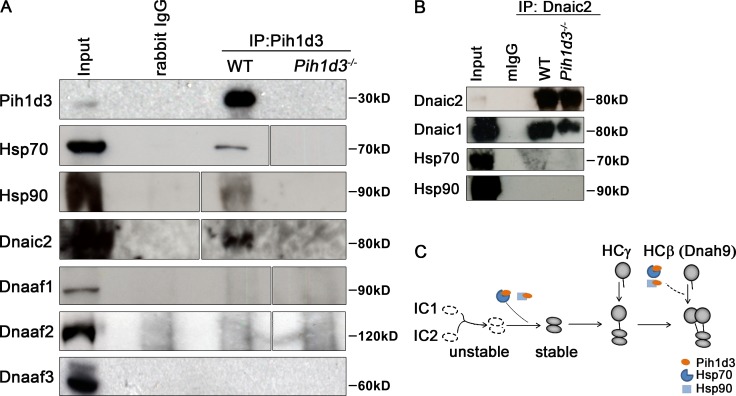Figure 6.
Pih1d3 interacts with Hsp70, Hsp90, and Dnaic2 but not with other Dnaafs. (A) A testis extract prepared from adult WT mice and Pih1d3−/− mice was subjected to immunoprecipitation (IP) with antibodies to Pih1d3 or control rabbit immunoglobulin G (rIgG), and the resulting precipitates as well as the original extract (input) were subjected to immunoblot analysis with antibodies to Hsp70, Hsp90, Dnaic2, Dnaaf1, Dnaaf2, and Dnaaf3. An equivalent amount of lysate (containing 2 or 5 µg protein) from the wild-type and the mutant testes was tested. White lines indicate the removal of intervening lanes for presentation purposes. (B) Testis extract prepared from adult WT mice and Twister−/− mice were subjected to immunoprecipitation (IP) with antibodies to Dnaic2 or control mouse immunoglobulin G (mIgG), and the resulting precipitates as well as the original extract (input) were subjected to immunoblot analysis with antibodies to Dnaic2, Dnaic1, Hsp70, and Hsp90. (C) Model for Pih1d3 function in cytoplasmic preassembly of ODA dyneins. A complex of Pih1d3 with the chaperones Hsp70 or Hsp90 may promote the stability of IC1 and IC2 by stabilizing newly formed complex. Pih1d3 acting in concert with the molecular chaperones may also promote HC stability by facilitating the proper folding of HCs or their assembly with ICs.

